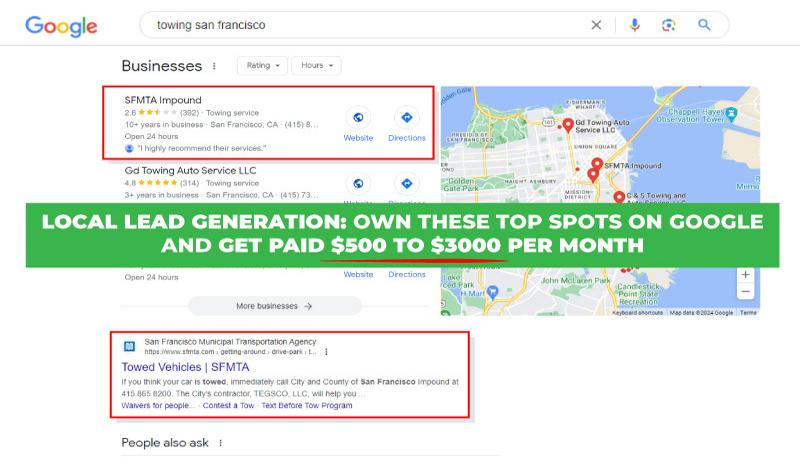8 Ways To Integrate SEO Into Your Content: Best Strategies To Dominate Search Engines

The best ways to integrate SEO into your content are:
- Conduct comprehensive keyword research and optimize for search intent.
- Emphasize E-E-A-T.
- Structure content formatting for readability and snippets.
- Strengthen internal linking and topic clusters.
- Leverage schema markups for rich results.
- Create Google’s helpful content focus.
- Optimize video content for YouTube SEO.
- Harness short-form video and social media SEO.
To integrate SEO, start with keyword research and optimizing for search intent. This aligns content with what people search for. Whether they seek quick answers, detailed guides, or product recommendations, your content can fill the gap. E-E-A-T (Experience, Expertise, Authority, and Trust) increases your credibility. This is an important ranking factor. Use trustworthy sources and stay accurate. Using these easy SEO techniques boosts your content’s performance, making it easier for your audience to locate.
You must use SEO to ensure people find your content online. Without it, even the most well-crafted articles may struggle to reach their audience. A BrightEdge study found that over 53% of website traffic comes from organic search. This means search engines like Google bring in more visitors than social media or paid ads. HubSpot also says that 75% of users don’t scroll past the first page of search results. So, it’s important to optimize content for better rankings. Beginners can boost their content’s visibility by using these SEO strategies.

Videos are a simple way to add SEO to your content. They can improve your rankings on both YouTube and Google. This is essential, as YouTube is the second-largest search engine. Wes McDowell says to use relevant keywords in your video titles, descriptions, and in the video itself. This helps search engines understand your content. Another great tip from McDowell is to add videos to your blog posts. Visitors remain on your site longer, boosting engagement and lowering bounce rates, which helps with SEO. Also, clear and helpful videos are more likely to appear in Google’s AI search results. This will bring in even more organic traffic.
I have over 10 years of SEO experience and have been ranking thousands of keywords since 2014. Additionally, I’ve used my SEO expertise to generate $52K per month in passive income. In this article, I explain how to structure your content for better readability. I also discuss how to leverage Schema Markup for Rich Results to enhance your content’s visibility in search engines.
1. Conduct Comprehensive Keyword Research & Optimize for Search Intent
A strong SEO strategy begins with comprehensive keyword research. Keyword research identifies terms and phrases your target audience is already searching for. By focusing on long-tail keywords and understanding search intent, your content will match what users need.
To use keyword research to integrate SEO into your content:
- Target long-tail keywords. Backlinko shows that 91.8% of all search queries are long-tail keywords. These specific phrases show strong intent and have less competition. Your content ranks better and attracts the right audience.
- Match search intent. According to Backlinko, 56% of searchers use three or more words in their queries. Only 7% rely on single-word searches. Decide if a keyword is informational, like guides or tutorials, or navigational, such as brand searches.
- Use keywords naturally. Don’t overload content with keywords. Use primary and related terms in important spots like titles, headings, and body text. Plan this carefully. Search engines use context, synonyms, and natural language to judge relevance. So, a keyword-rich yet readable style boosts rankings.
3. Structured Content Formatting for Readability and Snippets
Well-structured content improves readability, user experience, and search rankings. It also boosts your chances of showing up in featured snippets and answer boxes. These options lead to high visibility. Ahrefs reports that 12.3% of search queries show a featured snippet. So, using structured formatting is a smart SEO strategy.
To integrate SEO into your content using structured formatting:
- Use proper heading hierarchy for SEO clarity. Use H1 for titles, H2 for sections, and H3 for subtopics to create a logical flow. Organize the content like an outline. Google will grasp your main topics and subtopics easily.
- Write scannable, SEO-friendly paragraphs. Keep paragraphs 2 to 4 sentences long to enhance readability. Use bold or italics to highlight key information.
- Incorporate bullet points and lists for snippet optimization. Use bullet points for key takeaways, definitions, and comparisons.
- Answer questions directly to improve featured snippet chances. Identify common user questions and provide direct answers within the first one to two sentences. Use FAQ-style formatting or place questions in headings for better snippet optimization.
4. Strengthen Internal Linking and Topic Clusters
Internal linking is a strong but often missed SEO strategy. It boosts crawlability, page authority, and user experience. John Mueller from Google says internal linking is “super critical for SEO.” Search engines will see which pages on your site matter most.
- Build topic clusters to strengthen authority. Create pillar pages on broad topics that link to detailed subtopic pages (and vice versa). This reinforces topical authority and helps all linked pages rank for related queries.
- Use descriptive, keyword-rich anchor text. Use relevant, keyword-rich anchor text instead of vague phrases like “click here.”
- Keep crawl depth shallow for faster indexing. Important pages should be easily accessible within a few clicks from the homepage. Use internal links in content, navigation menus, and footers to ensure key pages aren’t buried.
- Fix broken and orphaned links to improve crawl efficiency. Audit internal links often. Fix broken links and ensure all pages are connected.
- Update older content with new internal links. When publishing a new blog post, go back and add internal links from older, high-ranking pages.
5. Use Schema Markup for Rich Results
Structured data markup (Schema.org) helps search engines understand your content. It also enables rich snippets in search results. Search Engine Land reports that some companies experienced a 30% boost in organic traffic after using structured data. Schema may not rank sites directly, but it does help listings stand out. This boosts click-through rates (CTR) and brings in more traffic.
To integrate SEO into your content using structured data:
- Add relevant schema types to your HTML for better search visibility. Use JSON-LD or microdata to mark up your content. Or, use types like Article, BlogPosting, FAQPage, HowTo, Product, or Recipe. Include important details like the author, publish date, ingredients, and pricing.
- Enable rich snippet features to improve click-through rates. Mark up FAQ sections to boost the chances of appearing in Google’s FAQ-rich results. Use review schema for star ratings on product or service pages.
- Improve local SEO with business schema. Use LocalBusiness schema to add business details like address, operating hours, and geo-coordinates. Ensure NAP (name, address, phone number) consistency across your site and directories.
- Test and validate markup for SEO effectiveness. Check for errors with Google’s Rich Results Test and Schema Markup Validator. Fix any missing or incorrect fields to maintain your rich snippet eligibility.
- Monitor CTR and adjust for better performance. Monitor changes in impressions and CTR in Google Search Console. Optimize schema markup based on search performance data.
6. Create Helpful, People-First Content (Google’s Helpful Content Focus)
Google’s Helpful Content System boosts the most useful content online. It lowers the rank of AI-made, low-quality, and even SEO-focused content that doesn’t offer real value. Google (2024) reports that its latest search updates removed 45% more low-quality content from results. This is more than its original goal of a 40% reduction. Google shifted toward rewarding originality and expertise.
To integrate SEO into your content using Google’s helpful content guidelines:
- Focus on user needs, not just keywords. Solve real problems and answer user questions in depth. Google recommends asking, “Would I still write this if search engines didn’t exist?"
- Demonstrate originality and experience. Share unique insights, case studies, personal experiences, or expert opinions. If covering a common topic, update it with fresh data or unique perspectives.
- Avoid search-engine-first content. Avoid clickbait titles and AI-generated content without human oversight. Focus on content quality, not keyword stuffing or mass production.
- Monitor engagement signals to improve SEO. Reduce bounce rates by making content engaging, scannable, and useful. Track metrics like time on page, scroll depth, and returning visitors with Google Analytics.
- Keep content fresh and up to date. Regularly audit and refresh old posts to maintain accuracy and relevance. Update statistics, examples, and strategies to reflect current trends.
7. Optimize Video Content for YouTube SEO
YouTube SEO is essential for maximizing video visibility. Backlinko reports that first-page YouTube videos average about 14 minutes and 50 seconds. Higher views, shares, and likes often lead to better rankings. Better titles, descriptions, and video structure boost search results. They also keep users watching longer.
To integrate SEO into your YouTube videos:
- Keyword-optimize titles and descriptions for better rankings. Use YouTube’s autocomplete or keyword tools to find high-traffic phrases. Include the main keyword in the video title for higher search visibility. Write compelling, keyword-rich descriptions that summarize the video.
- Timestamps and detailed descriptions for better searchability. Break the video into chapters using timestamps (e.g., 0:00 Intro, 1:30 Step 1, etc.). Write detailed descriptions to help YouTube understand the video content.
- Encourage engagement to boost YouTube’s algorithm signals. Ask viewers to like, comment, and subscribe to improve engagement signals. Reply to comments to increase interaction and video visibility.
- Add relevant tags and categories for extra context. Use primary and secondary keywords as tags (including common misspellings). Select the right category (e.g., Education, How-To, Tech) to improve relevance.
- Optimize thumbnails and playlists for higher click-through rates. Use eye-catching thumbnails with text overlays or vibrant images to stand out. Organize related videos into keyword-rich playlists to boost engagement.
Launch a Local Lead Generation Business With an SEO Strategy
Your success lies in strategic local SEO. Optimize your Google Business Profile (GBP). Use accurate details, engaging images, and aim for 5-star customer reviews. Target local keywords that show intent, like “best HVAC contractor in Denver” or “top personal injury lawyer in Chicago.” Create strong backlinks from local directories, industry sites, and news outlets. Also, make sure your NAP (Name, Address, Phone) is consistent across the web. This helps you dominate Google’s Local 3-Pack and top organic rankings. BrightLocal states that about 87% of local consumers search for services there.
Launch your local lead generation business with an SEO strategy in industries like home services, legal, medical, and real estate. Businesses in these areas always want new customers. They will pay $15 to $50 for a lead in home improvement. For legal services, they pay over $100 per lead. Build a well-optimized website to meet this demand. This way, you can become a critical lead provider and earn steady passive income.

Once your site generates leads, monetization is hands-off. You can rent your site to local businesses for $500 to $3,000 each month. You can also charge $20 to $100+ for each lead. Another option is to use affiliate programs for extra income. With multiple income sources from one top-ranking site, you can build a six-figure online business. Now is the time to act. Use these SEO tips to kick off your local lead generation business.

Follow Me
Ippei Kanehara
Founder/CEO
$52K per month providing lead generation services to small businesses
Ippei.com is for digital hustlers, industry leaders and online business owners.
His #1 online business recommendation in 2024, is to build your own lead generation business.
